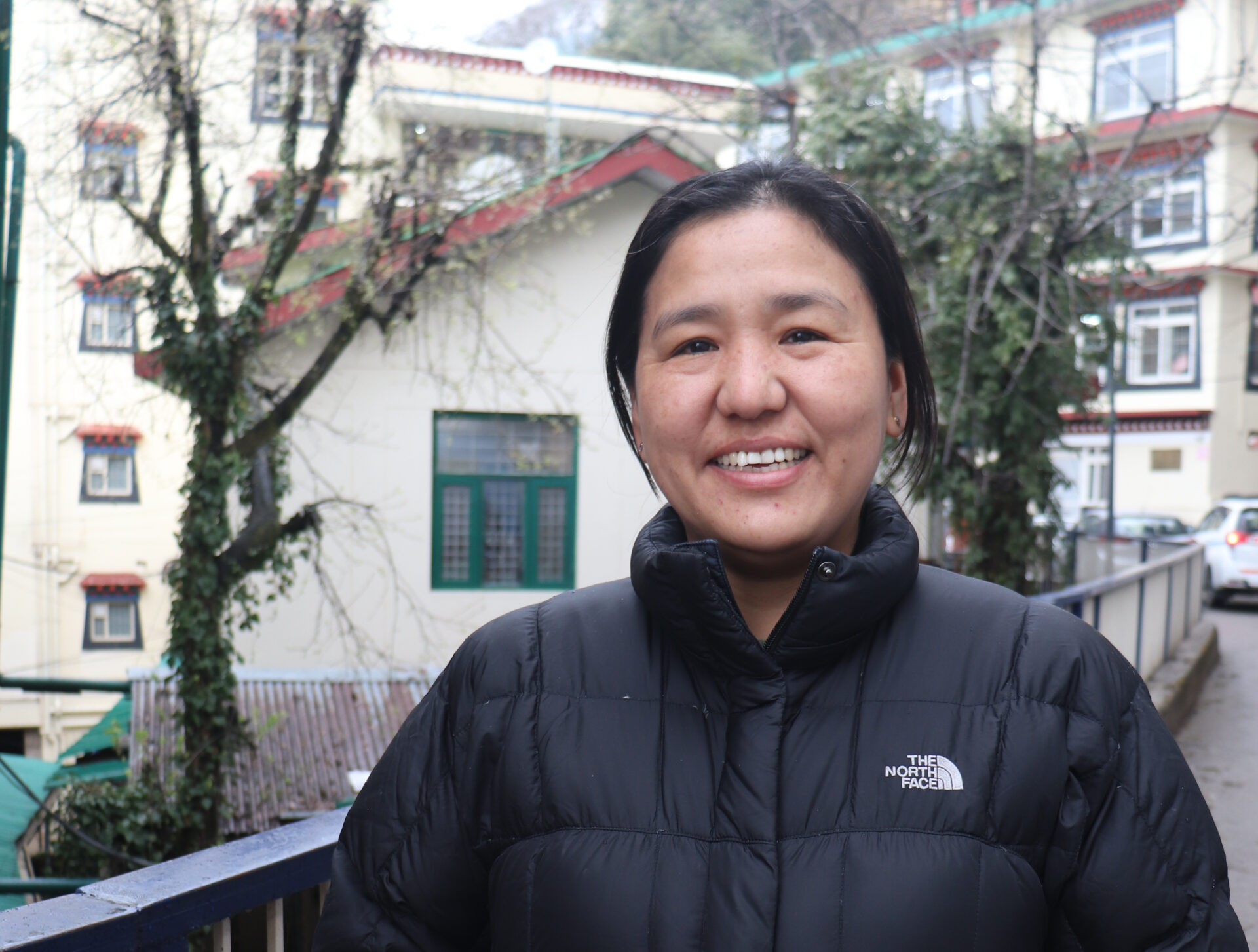The Search Within

A young Tibetan woman’s personal journey of finding strength working with IM in India, discovering her professional leadership through project management and continuing the expedition of self-discovery.
Her parents were her greatest inspiration. Her father had a difficult early life. He had to leave school in Tibet to come to India, worked tirelessly, and eventually taught Tibetan for 16 years as a primary school teacher. Her mother faced similar hardships. She fled Tibet as a young girl, attended school in India but had to leave after the eighth grade due to financial constraints. She worked as a day labourer for many years. Even today, she keeps herself physically fit by working hard—tending the farm, caring for cows, and managing household chores.
Young and charismatic Jigmey Yangchen says that her parents’ strength and determination taught her the value of hard work and instilled in her the drive to create a different life for herself while serving the Tibetan community.
IM’s Early Intervention
Jigmey completed her MBA in 2015 and started her career in a white-collar job in Bangalore, India’s tech hub. Yet her desire to serve her Tibetan community never faded. After three years at a software firm, she joined the Central Tibetan Administration (CTA)—Tibet’s parliament-in-exile in India. Without prior development sector experience, she secured her first assignment as a Project Officer with IM’s women empowerment project.
“I started at IM not knowing much about development work. Looking back, it wasn’t just running programmes that helped me grow; the IM partners network meetings held twice a year were invaluable. They were excellent for learning and exchanging ideas with other professionals. That period was a personal journey for me; it’s when I truly saw my growth,” says Jigmey.
She recalls overseeing programmes implemented by IM and CTA’s SARD (Social Welfare Department), including career counselling in Tibetan schools, income-generation initiatives in agricultural settlements, and the creation and empowerment of women’s self-help groups.
Milestones Achieved Through IM Programmes
Over time, IM and CTA strategically shifted their focus towards building a ‘self-reliant Tibetan community’, emphasising capacity building for CTA institutions, management, and staff.
Jigmey, now 34 and a mother to a toddler, reflects on this strategic shift: “One of the key milestones achieved under IM was the organisational development assessment process.”
The Organisational Development Assessment (ODA) Tool is a diagnostic framework that helps civil society organisations systematically review their processes, work environment, and structure to identify areas for improvement and guide development efforts. It helps organisations understand strengths and weaknesses, align goals, and implement effective change initiatives.
“I’ve seen the growth and impact of that programme within CTA. It encouraged us to think strategically like never before. Even now, when we write proposals, strategic plans, or long-term programmes, we always refer to the ODA process,” she says.
Personal and Professional Growth
“From 2015 to 2021, my time at IM really helped me grow, both professionally and personally. I apply those learnings every single day.”
Today, Jigmey is a Project Coordinator overseeing multiple projects within CTA’s education department.
“It’s not just professional growth that I gained; it’s also the confidence to manage development projects effectively. The partners network meetings at IM played a huge role in shaping me. They taught me to evaluate ideas, support others, and lead with assurance. My career growth is inseparable from my experience at IM,” she says humbly.
Changing With the Times
Jigmey believes that young Tibetans are reshaping their community. Many still pursue professional courses like medicine and nursing, but an increasing number are choosing careers in psychology, special education, and other emerging fields. With greater career guidance and opportunities, they are exploring diverse paths, reflecting a shift in the community’s aspirations.
“My career has been shaped by the opportunities I’ve had and my life experiences. IM helped me enormously, and my parents taught me strength and perseverance. Today, I remain in the education field, applying what I’ve learned—staying resilient, growing, and continuing to learn,” she concludes.
Text and photo: Isha Banerjee
By: Malin Kihlström